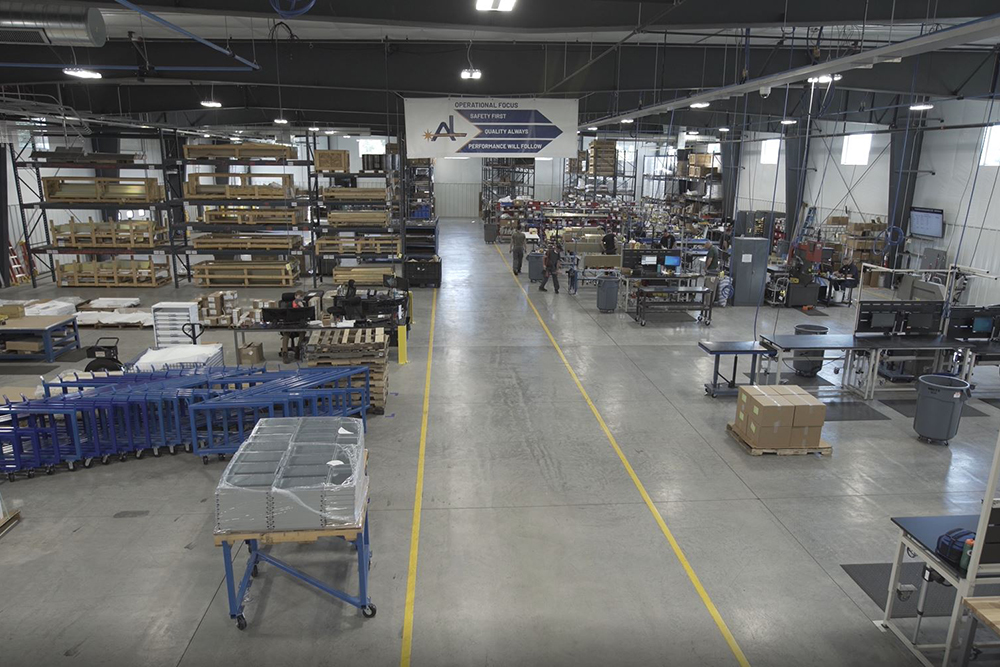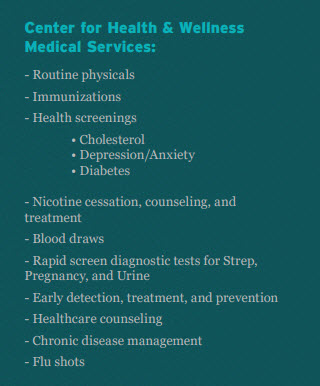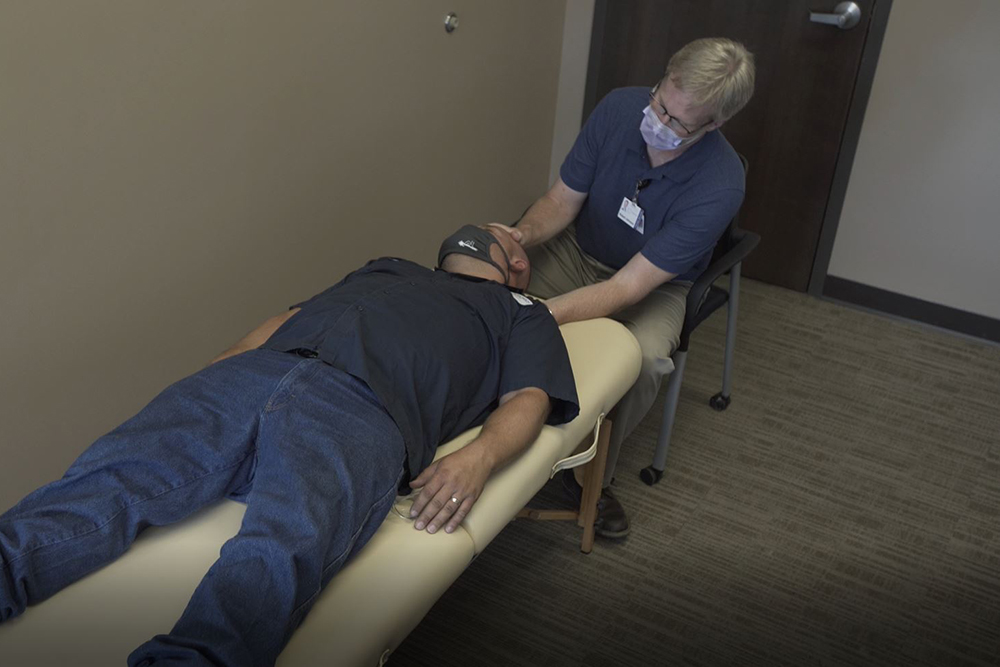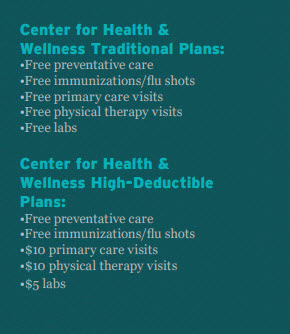Through self-funding and implementing a shared-site clinic that uses direct primary care, Tena Hoag, CFO of Advanced Laser, helped her organization save approximately 10% on their total health care costs in 2019. They then used those savings to reduce prescription drug prices and create their clinic’s mental health service offering – further improving her employees’ access to high-value health care.
Today, for every dollar Advanced Laser spends on their clinic, employees receive two dollars of care – over a 2:1 return on investment.
The Challenge of Reducing Health Care Costs
However, it wasn’t always this way. Before Tena arrived, employees weren’t engaged in their health, nor did they have low-cost access or easy-to-find resources for health care.
Employees were offered a traditional PPO plan, and Advanced Laser was facing year-after-year cost increases. When Tena became CFO at Advanced Laser, she immediately began trying different methods to reduce her organization’s health care costs. “We kept requoting our insurance package in hopes of finding some relief. Although it was disruptive to our families, we even changed carriers a couple of times to take advantage of that typical ‘good first-year’ pricing. We raised deductibles, coinsurances, and used incentives to try and convert our families to high-deductible plans,” she said.
Cutting Costs Using Direct Primary Care
Tena finally unlocked significant and lasting savings in 2018, after implementing a near-site clinic that practices direct primary care.
Direct primary care is the cornerstone piece of both good health and reduced cost. It allows us to eliminate the ‘discount from chargemaster’ game that’s often played in today’s healthcare economy.
Typically, providers give discounts from their chargemaster, or non-discounted price, for every service or product provided. But charge information isn’t generally useful to determine how much patients may need to pay because of factors like their plan, deductible amounts, and co-pays. And the discounts used to determine how much insurance providers pay can vary from hospital to hospital.
But with direct primary care, patients pay a low, set fee to access the clinic near their workplace – which saves them money and improves their access to high-quality care.

Desirable Services Creates Employee “Buy-In”
Tena has been able to get her workforce, top-to-bottom, engaged in their health and has dramatically expanded their access to high-value health care using no- and low-cost services through the shared-site clinic, which offers: biometric screening programs, a smoking cessation program, mental and physical therapy services, and a prescription drug benefit plan.
In tandem with the clinic’s offerings, Advanced Laser utilizes an optional high-deductible health plan for employees, which Tena has made as affordable as possible within the federal rules regarding high-deductible health plans. Additionally, employees are offered a PPO through Advanced Laser.
The clinic has ensured Advanced Laser’s workforce remains compliant in their health care journey by providing the following services completely free of charge – regardless of health plan choice: routine health maintenance, preventative prescription services, insulin, and other associated diabetic medical expenses. The clinic also serves as the company’s redesigned EAP, so the first four sessions of mental health services are free for all employees, as well as covered dependents. Subsequent sessions are offered at the same low rate as other clinic offerings.

Creating The Center for Health and Wellness
Advanced Laser is a metals-focused contract manufacturer in the Chippewa Valley, and with fewer than 100 employees, creating a clinic seemed difficult – if not impossible.
“At first, I thought a clinic would be out of reach for us because we’re such a small business with only about 80 families participating in our plan. However, by networking with other small employers in our area, we quickly realized we did have the power.”
Once she realized it was possible, Tena created a plan to establish the clinic:
“The first step in the clinic, honestly, was just getting myself educated. It’s really surprising how much folks are willing to help you if you just start asking the right questions, and I was fortunate enough to be introduced to some like-minded people. Though we were small – about a hundred employees at the time – I was determined to start down this path, knowing that it would take a while to implement and to get widespread adoption throughout our facility.”
That determination led her to continue looking for and making connections with people in similar situations to create the shared-site clinic, which she determined to be the best option given her company’s size.
“We live in a smaller rural community, and so many of the businesses and business owners tend to know each other. It didn’t take too many connections before we quickly found people that we had in common. I learned that another business in town was also heading down the path of trying to establish a clinic, and then we found a third local organization that was exploring the same options, and that’s how The Center for Health and Wellness was born.”
Tena explained that by aligning goals and establishing frequent, quality communication with all stakeholders involved made the transition smooth.
“We were fortunate that the organizations we ended up with all had very similar outlooks on where they wanted to go and how they wanted to treat their people; it made the collaboration so much easier than if our ends had been at odds.”
When asked about the biggest obstacle she encountered along the journey of creating The Center for Health and Wellness, the shared-site clinic, Tena said:
I think the biggest challenge is overcoming the mindset that if you’re small, you have no power and no options. That’s simply untrue.

“You surround yourself with smart people and let them help guide you. Don’t take the first ‘no’ as a final answer. There’s so much constantly changing with legislation, and the offerings that are out there, or the companies that are available to use, and no single person can be expected to know it all. It’s always better to be part of a village.”
The Benefits of a Near-Site Clinic
Thanks to the establishment of the clinic, employees can now get physical therapy treatment, mental health services, and health checkups, regardless if they are on Advanced Laser’s health plan or not. Further, Advanced Laser uses the clinic as a point of differentiation with prospective employees, because all are eligible to use it on their first day, regardless of FT/PT status and without having to wait the normal benefit period.
“We tie everything back to our near-site clinic. This includes pre-employment physicals, agility tests, biometric screenings, nicotine cessation, and health coaching. Our clinic seems to be a favorite among the benefits that we offer. When our employees have positive experiences at the clinic, they tend to tell other employees, and this is really one of the best ways to increase the clinic’s foot traffic.”
And that increased interest in the clinic quickly created a widespread adoption by employees and a new challenge for Advanced Laser – servicing employees in a timely fashion.
Our clinic utilization has been high enough that we’ve had to increase its hours of operation not once, but twice, since its inception.
Employees can either call the clinic directly to make an in-person or virtual appointment, or they can go to the dedicated web portal and register for a time slot that suits their schedule. Tena credits the clinic’s popularity to the dynamic, patient-centered experience direct primary care creates.
“I think the difference between typical healthcare and the healthcare provided at a near-site clinic is really the development of a relationship between the provider, the patient, and the patient’s family. It’s not simply a checkoff list of symptoms, but rather looking for the root cause. And that root cause doesn’t necessarily require expensive medications, expensive diagnostics, or a referral to a specialist. Health care starts at the most basic of levels, and I believe we’ve often forgotten that.”
Significant Savings for Employers and Employees
The shared-site clinic has saved its participating employers and their employees a significant amount on their overall health costs, too.
“Without a doubt, the clinic has saved the plan money over the two-and-a-half years that we’ve had it. From 2017 to 2019, our total plan cost per-employee, per-year dropped 32%. On a per-member basis, plan costs dropped 25% in that same three-year span.”
And because the vast majority of Advanced Laser employees are on a high-deductible health plan, and the majority of those plan participants never actually reach that deductible, the shared-site clinic is directly responsible for significant individual savings for those employees.
“The dollars that are saved at the clinic are dollars not being spent by our employees,” Tena said.

Executing a Successful Clinic
Employee Communication is Key
“Several things have to come together in order to be successful. Folks need to understand your offerings in plain language with lots of repetition. We’ve developed a monthly calendar where we’re reaching out to our people, whether that’s via regular mail, email, or on-site meetings. This allows us a chance to get the word out not only to our employees but also to other decision-makers in the home.
In fact, Tena takes employee communication to the next level by implementing “Fairy Tales” in their newsletters. The stories typically share important benefit plan information in a format that’s easy to digest.

Tying Together Incentives With Tiering
By using smart benefit plan design, like tiering, employers can communicate and incentivize employees to choose high-value options where both parties experience significant savings.
“Our plan has been altered to have essentially three tiers, and you can think of it like a stoplight: red, yellow, green. Each of those colors comes with its own set of deductibles, out-of-pocket, and co-payments. We are trying to build these choices right into the plan so they can make one that’s right for them and right for the plan.”
And by offering a plethora of concierge services and the shared-site clinic, a top-tier choice, Tena’s employees are reaping the rewards of high-value health care. Since the clinic’s inception, medical claims paid have gone from about $200 per member per month to about $160. Tena calculates those savings by analyzing Advanced Laser’s claims data – which they gained access to by self-funding – and compares the cost of those services had they been performed at a local provider instead.
In terms of hard dollars, the clinic generates about $4,000 to $7,000 a month in savings. But because most of our folks are on a high-deductible plan, they never reach those deductibles, so those savings are typically passed immediately into the hands of our employees. It makes me smile every time I think about how they can spend that cash on their families instead of on overpriced health care.
Future Plans for Advanced Laser
Tena’s drive to improve the lives of her employees hasn’t been satiated, either. She has big plans for the future of health care in her community.
“For 2021, we will continue to educate our employees on our behavioral health offerings, our nicotine cessation, as well as expanding our concierge services to help employees navigate the current healthcare maze. Additionally, we’ve started to ask food security and housing security questions in order to assess the depth of those needs in our populations. We have several programs in the pipeline to address those once more information is known.”
Sharing the Wealth of Knowledge
Because Tena is seeing so much success in her company, she’s working to share her experiences with other employers through networking and education. She shares her expertise with other employers and local government entities through speaking engagements, radio segments, and other hosted events. In February, she spoke on behalf of employers to Governor Evers’ Task Force on Reducing Prescription Drug Prices on prescription issues that affect employers.
She has also spoken to other groups like Chippewa Falls Chamber of Commerce, Leadership Chippewa Falls, and Wisconsin Public Radio. Additionally, Tena has hosted multiple educational events for Chippewa County Economic Development and Employer Coalition for Northwest Wisconsin – both held at her Advanced Laser location.
On October 1st, The Alliance awarded Tena with a Health Transformation award for her significant contributions to transforming health care delivery and significantly improving her employees’ access to high-value health care.
We asked Tena to share a last bit of advice to employers. Her response was unsurprisingly straightforward: “The one piece of advice that I would have for anyone considering an on-site or near-site clinic, just do it. Don’t agonize over the ROI. Don’t wait for the moon and stars to align. Just do good by your people, and the rest will take care of itself.”